The Scourge Is Scrubbed
Scientists Celebrate More Than 10 Years of a Rat-Free Anacapa Island
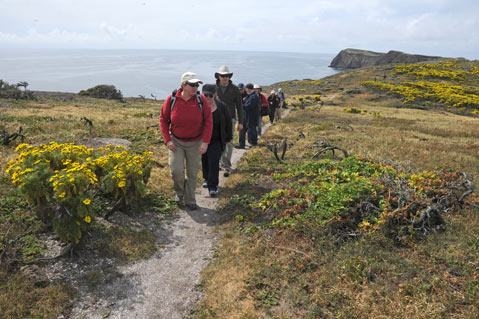
This newspaper thought it had problems when a single rat scuttled under an editor’s desk last week. But the 15 minutes of shrieking, jumping on chairs, and eventual capture came nowhere close to the challenge faced by scientists and park rangers when they undertook the ambitious and delicate effort to permanently rid Anacapa Island of invasive black rats. Since the early 1900s, the rats had decimated rare seabird populations and wreaked general biological havoc on the 700-acre swath of rugged but life-rich volcanic rock 11 miles off the coast.
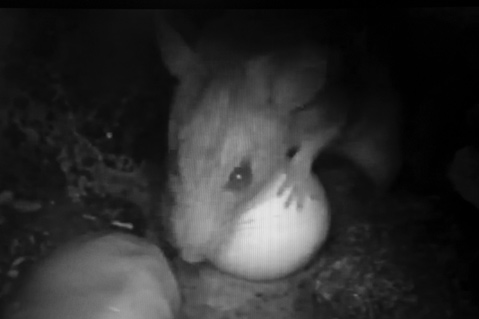
The project — which started with four years of research before a helicopter sprinkled custom-made poison pellets over the terrain in 2001 — was the first of its kind in North America, but it has become a model for similar efforts around the world to take troubled island habitats back to their state before human-brought nonnative wildlife attacked their shores. Half of the species extinctions around the world are caused by out-of-control rat populations, and 80 percent of all extinctions occur on islands, often home to unique flora and fauna that evolved in a cocoon of natural selection away from the mainland.
There was no shortage of critics when the National Park Service and the Santa Cruz–based Island Conservation group first pitched the $3 million “death from above” plan. (The money came from a settlement in the 1990 oil spill off Huntington Beach.) Naysayers ranged from animal activists who pointed to the sanctity of all life and worried about collateral damage to other creatures to a man named Rod Puddicombe, who made an illegal and vain attempt to save the rats by tossing vitamins on the island, to blistering editorials in the Santa Barbara News-Press to the Environmental Protection Agency, which at first threatened to throw a lead scientist in jail.
But last Thursday, the original group of biologists, who had the support of their colleagues from the get-go, returned to Anacapa to celebrate what can only be described as a total success. Perhaps most significantly, the anecdotal and visual information gleaned over the last 15 years — the island looks, sounds, and feels notably improved since the 1990s when park visitors were greeted by rodents scampering through nonnative ice plant — is backed up by hard, indisputable data.
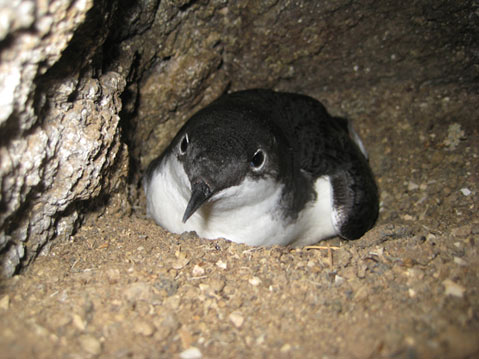
Since the last poison drop in 2002, the scourge of rats is completely gone, seabirds like the Scripps’s murrelet and the ashy storm-petrel are nesting once again, deer mice can now forage and breed freely, side-blotched and alligator lizards are more plentiful, and indigenous plants — which the rats ate for water — are on the rebound. For instance, the hatch rate for the Scripps’s murrelet — one of the world’s rarest seabirds, with 80 percent of their numbers living in the Channel Islands National Park — went from 30 percent to 85 percent. (A pair were seen foraging for food off the stern of our boat as we headed to the island.) The rats had been attacking and scaring off breeding murrelets before their eggs’ three- to four-week gestation period was complete; then they would eat the unattended eggs. They also munched on intertidal animals such as clams and limpets.
“The last thing we needed was a project that got only 99.9 percent of the island’s rats,” said Kate Faulkner with the National Park Service, explaining how a single surviving pair could have meant failure. “I’m proud of it, but it was a team effort,” said Gregg Howald of Island Conservation. “You don’t go into it wanting to kill rats, but [the Anacapa] issue was one that needed to be resolved. If I wanted to kill rats, I would be running around city alleys doing it.” Island Conservation’s Nick Holmes summed up the criticism well, explaining, “Seabirds don’t have the ability to live elsewhere. Rats do.”
No one knows for sure when Rattus rattus first arrived on the island. Some say it was in 1854 when the Winfield Scott, a paddle-wheel steamer, wrecked nearby in a storm. Others claim the black rats showed up when the government built a lighthouse on the island’s eastern point. Either way, the small, prolific mammals were first recorded in 1907 and enjoyed a relatively unchallenged license to destroy for the last 100 years.
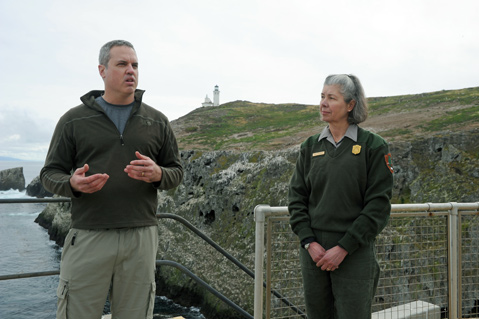
At first, the scientists considered the idea of a “biological control,” such as introducing snakes or cats to prey on the invaders. But the idea of trading one nonnative for another was soon dismissed, as that idea has never worked too well, such as in Hawai‘i, where mongooses were once introduced to attack rats that had taken over sugar cane fields. A total disaster, the mongooses — which are awake during the day while rats are nocturnal — instead ate, and continue to eat, native birds. Howald said the Anacapa group also considered dispersing some kind of chemical contraceptive to make the rats infertile, but he explained the technology just isn’t there yet.
That left the rodenticide approach, which had seen success in New Zealand. The compressed-grain, fingertip-sized pellets — with about half the anti-coagulant poison often found in retail products — were designed specifically for Anacapa and dyed green to dissuade birds from eating them, as birds apparently avoid foods in the green-blue color spectrum. They were also made to stick around for about four days before disintegrating. Special care was taken to ensure they stayed out of the ocean, and scientists placed some in rat dens by hand and used slingshots to reach out-of-the-way nooks and crannies. Most of the rats died in their burrows. Those that expired in the open were picked up by hand.
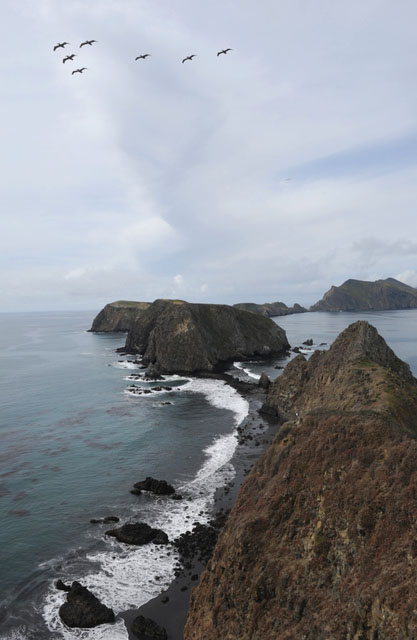
The project was carried out in two phases: East Anacapa Island in 2001, with Middle and West Anacapa in 2002. To keep the rodenticide from wiping out the island’s deer mice, the biologists shifted them to parts of the island where the pellets weren’t and kept an insurance population of 700 in an old fuel storage building dubbed the “mouse house.” Once the drops were complete, all the mice were released back into the wild, and their numbers have since swelled back to healthy densities.
More than 2,000 miles away and seven years after the Anacapa eradication, certain Aleutian islands in southwest Alaska got rid of their rodent issue with this same strategy, eventually ditching their old name Rat Islands to take on the original Aleutian moniker, Qaxˆum tanangis. Wake Island, a coral atoll in the North Pacific Ocean, is similarly rat-free as of last year. “I can’t believe how much Anacapa has influenced global conservation,” Howald noted.
Though he and Faulkner addressed the media from the island’s Inspiration Point last Thursday with all the poise and professionalism of a boardroom meeting — albeit surrounded by glaring seagulls staking out territory, barking sea lions lying out by the water’s edge, and freshly blooming coreopsis flowers — Howald later made it a point to note how much Faulkner has done over the years in the ongoing effort to restore the Channel Islands ecosystem back to the way Mother Nature intended. “I take my hat off to Kate Faulkner,” he said of her work to eliminate feral pigs from Santa Cruz Island, deer and elk from Santa Rosa Island, and cats from San Nicolas Island. “The only way to describe her is a linebacker who runs interference for the guy with the ball,” Howald said. “She truly is a conservation hero. That lady deserves an award.”



